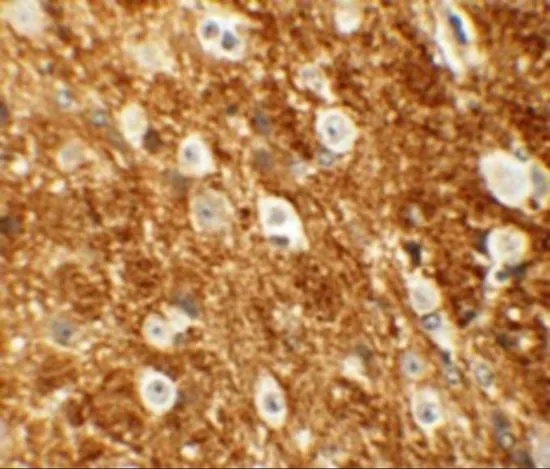ROCK2 antibody [N3C1], Internal
GTX108247
ApplicationsImmunoFluorescence, Western Blot, ImmunoCytoChemistry, ImmunoHistoChemistry, ImmunoHistoChemistry Paraffin
Product group Antibodies
TargetROCK2
Overview
- SupplierGeneTex
- Product NameROCK2 antibody [N3C1], Internal
- Delivery Days Customer9
- Application Supplier NoteWB: 1:500-1:3000. ICC/IF: 1:100-1:1000. IHC-P: 1:100-1:1000. *Optimal dilutions/concentrations should be determined by the researcher.Not tested in other applications.
- ApplicationsImmunoFluorescence, Western Blot, ImmunoCytoChemistry, ImmunoHistoChemistry, ImmunoHistoChemistry Paraffin
- CertificationResearch Use Only
- ClonalityPolyclonal
- Concentration1 mg/ml
- ConjugateUnconjugated
- Gene ID9475
- Target nameROCK2
- Target descriptionRho associated coiled-coil containing protein kinase 2
- Target synonymsROCK-II, rho-associated protein kinase 2, p164 ROCK-2, rho-associated, coiled-coil-containing protein kinase II
- HostRabbit
- IsotypeIgG
- Protein IDO75116
- Protein NameRho-associated protein kinase 2
- Scientific DescriptionThe protein encoded by this gene is a serine/threonine kinase that regulates cytokinesis, smooth muscle contraction, the formation of actin stress fibers and focal adhesions, and the activation of the c-fos serum response element. This protein, which is an isozyme of ROCK1 is a target for the small GTPase Rho. [provided by RefSeq]
- Storage Instruction-20°C or -80°C,2°C to 8°C
- UNSPSC12352203
References
- Fujimura K, Choi S, Wyse M, et al. Eukaryotic Translation Initiation Factor 5A (EIF5A) Regulates Pancreatic Cancer Metastasis by Modulating RhoA and Rho-associated Kinase (ROCK) Protein Expression Levels. J Biol Chem. 2015,290(50):29907-19. doi: 10.1074/jbc.M115.687418Read this paper
- Chou HC, Chan HL. 5-Methoxytryptophan-dependent protection of cardiomyocytes from heart ischemia reperfusion injury. Arch Biochem Biophys. 2014,543:15-22. doi: 10.1016/j.abb.2013.12.014Read this paper



